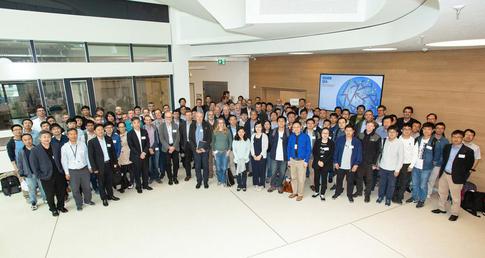XFEL: CHILFEL – German Chinese collaboration
CHILFEL – German Chinese collaboration

Participants of the German-Chinese workshop that took place at DESY in June. Copyright: DESY
German and Chinese scientists want to strengthen collaboration in the field of Free-Electron laser (FEL) research. The “CAS Helmholtz International Laboratory for FEL Science and Technology” (CHILFEL) will form the basis for joint research projects, infrastructure development and student exchange programs. Partners of the venture are DESY, European XFEL, Shanghai Institute for Applied Physics (SINAP) and ShanghaiTech University.
The Helmholtz Association today announced it will fund the initiative as a Helmholtz International Lab with 300,000 Euro per year for six years. Together with contributions from DESY, European XFEL and the Chinese partners, an overall budget of 1.2 Million Euro will be available per year for CHILFEL. The collaboration will start on 1 January 2019.
China, in particular institutes associated with the Chinese academy of sciences (CAS) such as the Shanghai Institute for Applied Physics (SINAP) and the recently founded ShanghaiTech University, is very active and knowledgeable in the field of FEL research. As well as a modern synchrotron source, Shanghai also boasts an operating free electron laser for soft X-rays and the recently approved ambitious project “SHINE”, a FEL for hard X-rays based on super conducting accelerator technology.
The founding of CHILFEL follows several joint German-Chinese scientific workshops. CHILFEL’s scientific program will initially comprise five areas: scientific applications of FELs with soft and hard X-rays, FEL method and instrument development, FEL seeding and synchronization, development of detectors and super conducting cavities. In total 25 scientists from Hamburg and Shanghai are involved.
